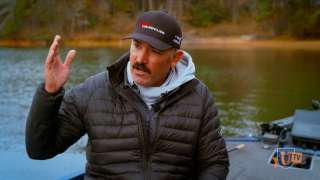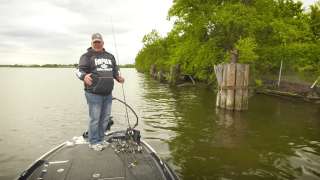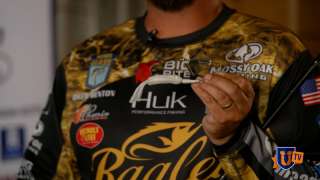Almost every body of water has riprap, whether it's for roads & railroad tracks, for jetties or residential bank stabilization, you can usually find stretches of chunk rock, brick, concrete blocks or even old tires. Usually these man-made features are to stop bank erosion or control the current, but they also make great bass habitat. Bass use these areas to feed, get out of heavy current, find stable environement when conditions change and even spawn. Baitfish and crawfish also use these areas to feed, and the space between rocks to hide from predators. In this hour-long bass fishing master class seminar video on how to fish riprap, the Dean of the Bass University, Pete Gluszek, talks about different types of riprap, targeting riprap in different seasons, best baits for fishing these rocky areas, and ends with answering some student questions about fishing riprap.
- 0:18 Welcome to fishing riprap with Pete Gluszek
- 1:05 What is riprap, what is it used for, and why are bass often found there?
- 8:56 Riprap and flooded water
- 10:15 Using Google Earth and electronics to locate various types of riprap: jetties, bank stabilization, bulk head (seawall) stabilization
- 15:59 Parallel vs perpendicular jetties
- 18:49 What are you looking for on riprap? What are the key features that hold fish?
- Seasonal Patterns
- 25:16 Top techniques and baits that usually do well fishing riprap
- 40:40 Tackle for riprap bass fishing
- 43:01 Best time of year to focus on riprap
- 44:56 Will heat retention in the summer deter bass from holding on rocks in the summer?
- 46:17 Is there a right and wrong direction for fishing current?
- 49:54 Deflection with soft plastic lures and not getting hung up
- 55:38 Humminbird MEGA 360 & shallow water anchors for fishing riprap













